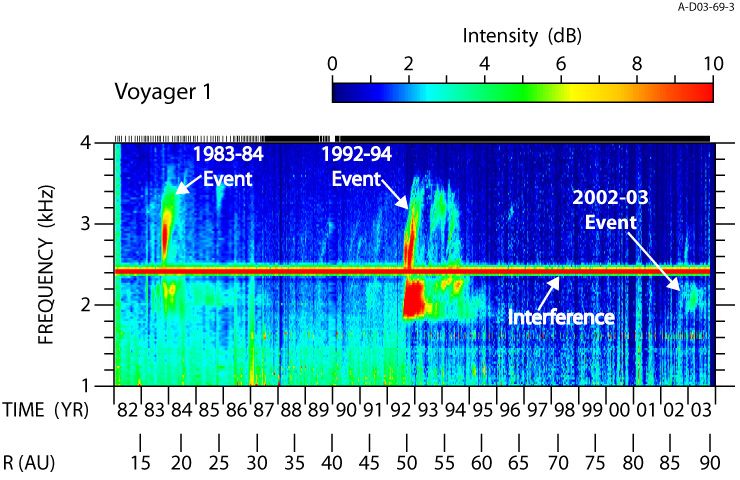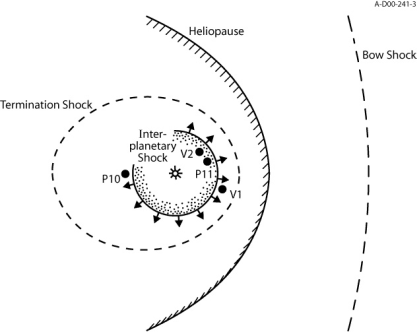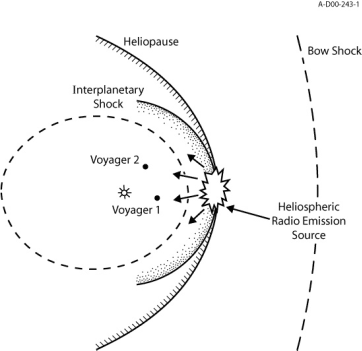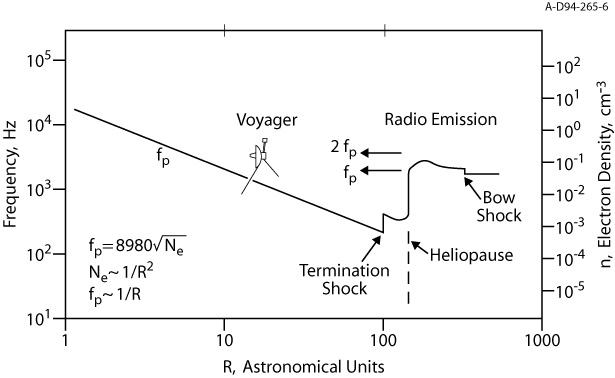|
Heliospheric 2-3 kHz radio emissions are produced when an interplanetary
shock interacts with the heliopause, which is the boundary between the
solar wind and the interstellar plasma. The sequence of events is
illustrated in Figures 1 and 2 below. About once
per solar cycle, usually shortly after solar maximum, a period of
exceptional solar activity occurs, with numerous coronal mass ejections
over a period of a month or more. As time advances, the shock waves from
these disturbances merge into an exceptionaly strong quasi-spherical
interplanetary shock wave and associated plasma disturbance (called a
global merged interaction region) that can propagate to great distances
from the Sun. Figure 1 shows such a shock wave. Interplanetary shock
waves of this type have been detected by various spacecraft, such as
Pioneers 10 and 11 (now no longer operating) and Voyagers 1 and 2, indicated by
P10, P11, V1, and V2 in Figure 1. As this shock wave propagates outward
from the Sun it eventually crosses the termination shock, where the solar
wind becomes subsonic, and continues on until it reaches the heliopause.
When the shock crosses the heliopause into the cooler, more dense
interstellar medium it generates radio emissions at the electron plasma
frequency, fp, and its harmonic, 2fp.
The radio emission is then detected by Voyager, as illustrated in Figure 3, which shows a typical profile of the electron
plasma frequency as a function of radial distance from the Sun. The
color frequency-time spectrogram shown above, which covers a time period
of 22 years (from 1982 through 2003), has three such events, a moderately
strong event in 1983-84, a very strong event in 1992-94, and a new weak
2002-03 event. Typically it takes a year or more for the shock to travel
from the Sun to the heliopause, but less than a day for the radio
emission to propagate from the source region to Voyager.
Don Gurnett
Principal Investigator of the Voyager PWS
|



